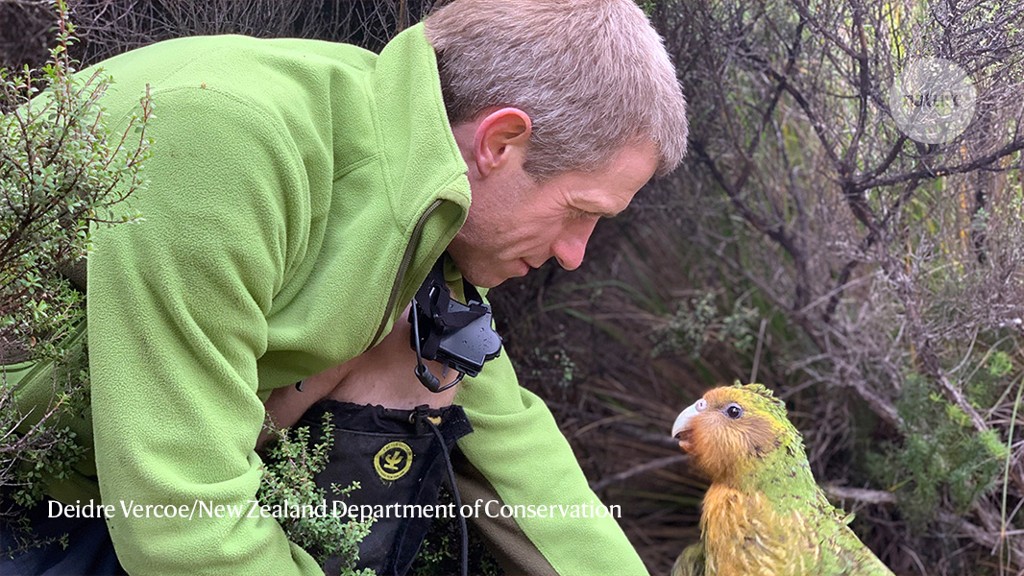Kakapo are probably the weirdest birds in the world: they’re large, flightless, nocturnal parrots. Found only in New Zealand, they are critically endangered and now live only on four predator-free sanctuary islands. Thanks to intensive management of their populations and breeding, we now have 201 birds in our sanctuaries — up from a low of 51 in 1995.
As the conservation biologist on the kakapo team, I work mainly in our office in Invercargill on South Island, New Zealand, 60 kilometres from one of our sanctuary islands. I communicate with international experts about disease, inbreeding and other threats, and about solutions. Last year we had a huge outbreak of aspergillosis, a fungal disease, that made 21 birds ill and killed 9.
Kakapo are unusual in that they manage on very low levels of vitamin D. We’re trying to understand this, which might help us to improve supplemental feeding. The birds breed every few years when the rimu tree fruits. The berries have very high levels of vitamin D, which the birds might need to lay eggs and raise chicks.
During the breeding season, I’ll spend months on the sanctuary islands off South Island and near Auckland in the north. We use artificial insemination to boost fertility and avoid inbreeding. We fit every bird with a tracker and an activity monitor, which they wear like a backpack. We use drones to send fresh semen around the island to make the best matches for receptive females.
We’re now on near-total lockdown in New Zealand, so we can’t monitor the kakapo in person. We’ll continue to use our remote-monitoring systems to keep as close an eye on them as we can.
It’s rewarding to work with this amazing species that most people never get to see. Sinbad, my favourite (pictured), is inquisitive around people. People fall in love with kakapo when they know them.

